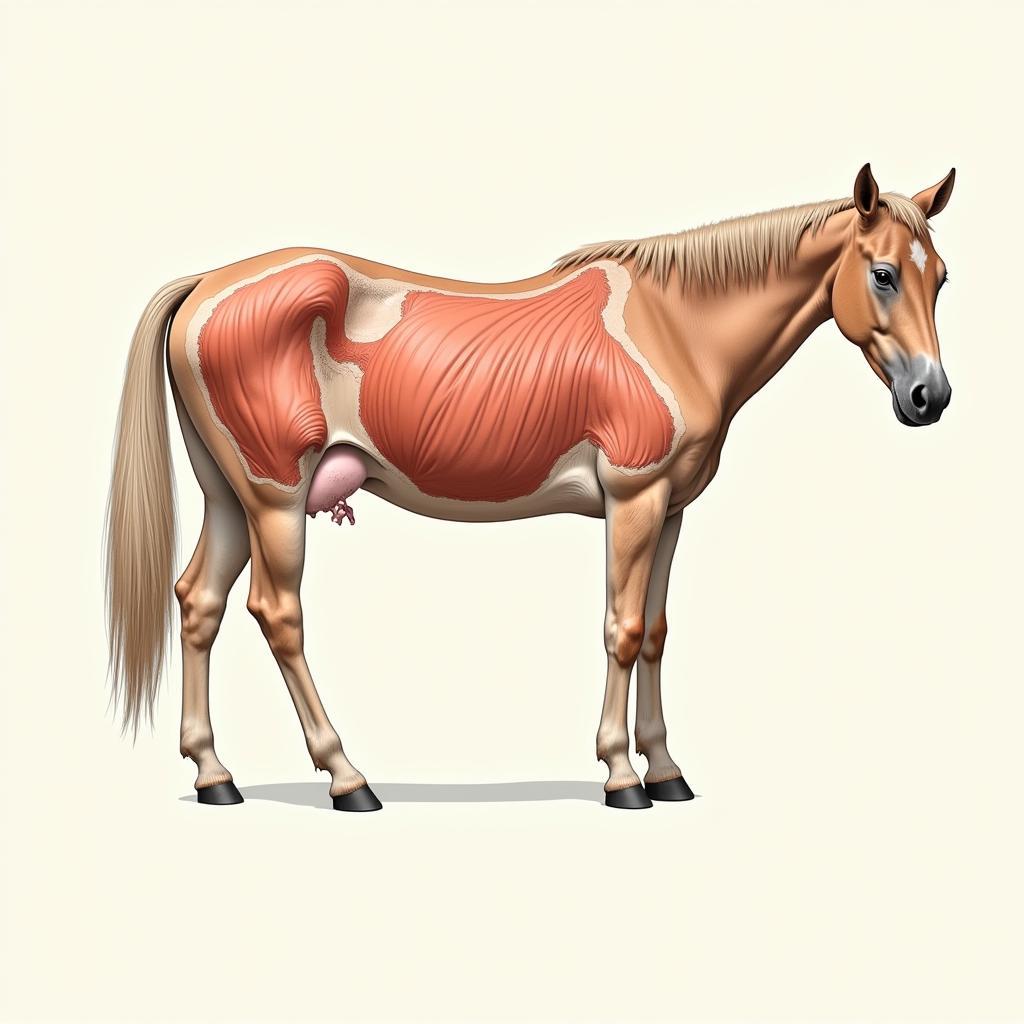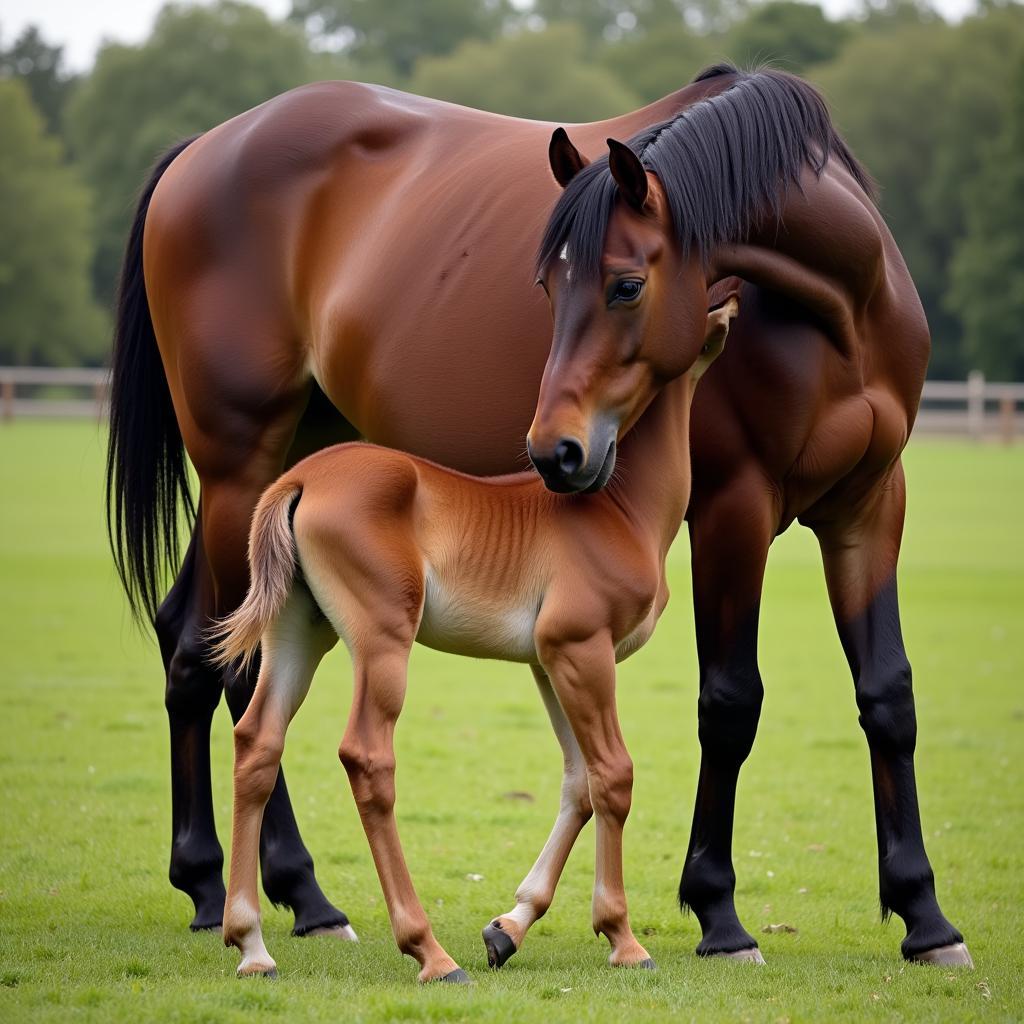Horse Breasts, also known as mammary glands, are an essential part of a mare’s reproductive system. While they might not be the first thing that comes to mind when you think about horses, understanding their normal appearance and function is crucial for any horse owner, especially breeders. This knowledge can help you identify potential health issues early on and ensure the well-being of your equine companion.
The Anatomy of Horse Breasts
 Anatomy of Horse Mammary Glands
Anatomy of Horse Mammary Glands
A mare typically has two mammary glands, one on each side of her groin area, forming the udder. Each gland consists of milk-producing tissues, milk ducts, and a teat. The teats, located at the bottom of each gland, have two small openings that release milk. Unlike cows, which have four teats, mares only have two, making their mammary system relatively simple.
Changes in Horse Breasts Throughout Life Stages
 Mare and Foal Nursing
Mare and Foal Nursing
A mare’s breasts undergo significant changes throughout her life, particularly during pregnancy and lactation.
- Before pregnancy: In a non-pregnant, non-lactating mare, the mammary glands are usually small and barely noticeable.
- During pregnancy: As the pregnancy progresses, hormonal changes trigger the development of the mammary glands. They gradually increase in size, becoming more prominent as the mare prepares for lactation.
- After foaling: Shortly before and after giving birth, the mare’s udder becomes engorged with milk, appearing full and tight. This engorgement is a natural process as the mare’s body prepares to nourish her newborn foal.
- During lactation: As the foal nurses, the mare’s body continues to produce milk, and the size of her breasts fluctuates depending on the frequency and duration of nursing.
- After weaning: Once the foal is weaned, the mare’s milk production gradually decreases, and her breasts return to their pre-pregnancy size.
Common Concerns Related to Horse Breasts
While changes in breast size are expected during different life stages, certain abnormalities can indicate underlying health issues. Some common concerns related to horse breasts include:
- Mastitis: An infection of the mammary gland, mastitis can cause pain, swelling, redness, and heat in the affected area. The mare may also exhibit fever, loss of appetite, and a decrease in milk production.
- Udder edema: This condition, characterized by fluid buildup in the udder, often occurs around the time of foaling. It typically resolves on its own, but severe cases may require veterinary attention.
- Injuries: Cuts, abrasions, or punctures to the udder can lead to infections and require prompt veterinary care.
- Tumors: While less common, tumors can also affect the mammary glands in mares.
“It’s important to regularly check your mare’s udder for any abnormalities, especially during pregnancy and lactation,” advises Dr. Emily Carter, a renowned equine veterinarian. “Early detection and treatment of any issues are crucial for ensuring the mare’s well-being and the health of her foal.”
Conclusion
Understanding the normal anatomy and function of horse breasts is vital for any horse owner. By being aware of the changes that occur throughout a mare’s life and recognizing potential signs of problems, you can contribute to the overall health and well-being of your equine companion.
Need assistance with your horse’s health? Don’t hesitate to reach out!
Contact Justus Horses USA:
- Phone: 0772127271
- Email: [email protected]
- Address: QGM2+WX2, Vị Trung, Vị Thuỷ, Hậu Giang, Việt Nam
Our dedicated team is available 24/7 to provide expert advice and support.